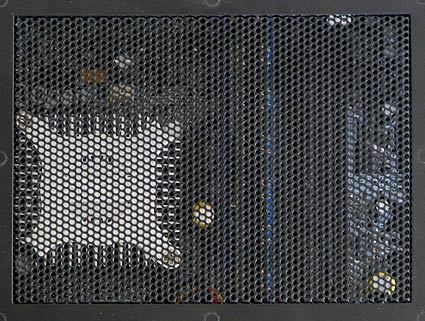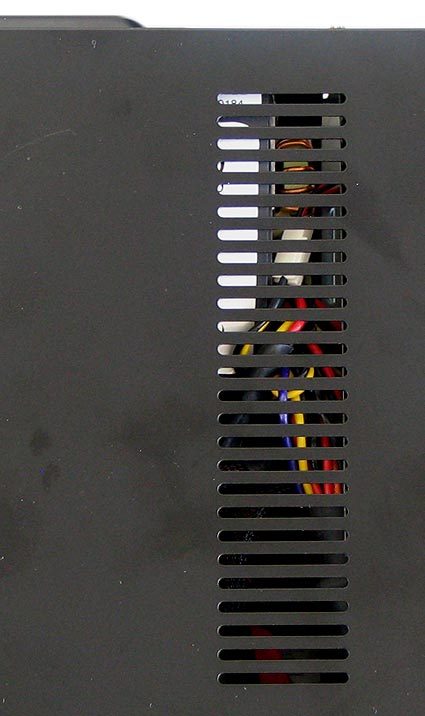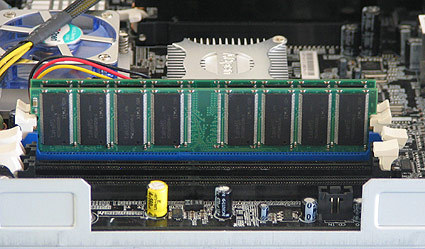Building The Ultimate Home Theater PC
Stress Test, Continued
The culprit responsible for the rapid temperature rise was soon found. The whole trouble was the fault of the Hiper case. The vents are not laid out for the AOpen motherboard. On the i915 board, the passive chipset is located where the CPU socket would normally be. It does not draw in air from the outside, and just serves to heat up the interior even more. Nor do the ventilation slits on the sides provide cooling, because the two memory chips prevent the heat from escaping.
Vents in the case lid. The chipset cooler is open, but the CPU cooler is not.
By comparison: the same vent is in the Hiper case, but it is equipped with an AMD Athlon 64 board. The CPU cooler directs the hot air out of the case with ease
More vents near the power supply unfortunately don't ensure sufficient dissipation.
Regrettably, the side openings don't have much effect.
The position of the two memory chips is responsible for the poor air flow.
Get Tom's Hardware's best news and in-depth reviews, straight to your inbox.
Current page: Stress Test, Continued
Prev Page Functional Test In Stress Test Next Page For The Pentium M - Mission Impossible At First




